This ultimate guide on grape farming will help you to cultivate grape in your farm land. Learn organic as well as inorganic grape farming methods through this article.
Cultivating grape is one of the most profitable farming practice in the world. According to the market prices from one acre of land you can earn up to 7 lakhs Indian Rupees. However higher yield, quality and demand results in good profit.
And in this article you are going to learn all the important factors that can make you a successful grape farmer. So let’s start with a informative introduction of grapes.
Table of Contents
Introduction
Botanically grape is a berry but it is also popular as non-climacteric fruit crop in the world. You can sell fresh harvested table grapes directly in the market. Or you can sell it for industrial purposes.
Food & Beverage Industries use grapes to prepare wine, jam, jelly, juice, vinegar, raisins, grape seed oil etc. However if you own a large farm then you can also set up your own manufacturing units to produce these items.
Just like kiwi, grape is also a deciduous vine fruit crop. The fruit grows in clusters of about 15 to 300. Depending on the variety colour can also vary from yellow, green, orange, black, blue, to pink. On an average a single grape vine can produce 40 grape clusters.
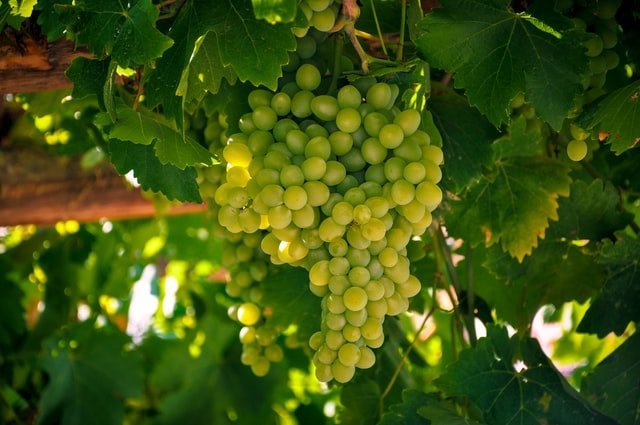
Botanical Classification
Botanical Names: Vitis amurensis, Vitis labrusca, Vitis riapria, Vitis mustagensis, Vitis rotundifolia.
Family: Vitaceae
Order: Rhamnales
Class: Magnoliopsida
Division: Magnoliophyta
Chromosome Number: 19
Source: creationwiki.org
The term “Viticulture“ is known as the cultivation of grapevines.
Origin Of Grape
Researchers believes that grapevines originated in Western Asia. Culture of grapevines began during 6000 B.C. in Asia Minor and the Near East. However Romans and Greeks started cultivating grapes for direct consumption and wine production.
Later on due to increasing demand and benefits it spread to other parts of the world.
Area & Production
According to the Atlas Big, worldwide about 77,518,398 tonnes of grape is produced every year. China is the largest producer of grapes with annual production of around 14,842,680 tonnes every year. This is followed by Italy, United States Of America, France, Spain, Turkey, India, etc.
India is the 7th largest producer of grapes with annual production of about 2,590,000 tonnes.
Grape Farming Guide

Soil Requirements
Soil plays a very important role in the growth of the plants. That’s determining soil quality helps to select suitable crop for farm to get maximum yield.
You can cultivate grape in wide range of soil. But to get higher yield prefer Clayey or loamy to sandy loam, well drained soil that is rich in organic matter. Ideal soil pH range is around 6.5 to 7.5. Avoid cultivating grapes in alkaline soil as it will result in poor yield.
Climate & Temperature
Grape crop can adapt to grow in wide range of climate. But Mediterranean regional climate is ideal for grape farming. Grapes can grow in warm temperate, sub-tropical to tropical climate to an extent.
In natural environment, grape vine undergo dormancy during cold winters and produces fruit during hot and dry summers. Temperature range of 15 to 35 degrees Celsius is ideal for grape vine development.
However temperature below 10 degrees Celsius affects the growth of the plant. It reduces vine growth and fruiting. Annual rainfall of up to 900 mm is ideal.
Variety Of Grapes
There are mainly three categories of grapes, i.e. Table purpose, Wine purpose, and Raisin purpose grape. Here I am sharing table of category wise commercial variety of grapes. You can select any one to cultivate in your farm.
| Category | Varieties |
|---|---|
| Table Purpose Grape | Beauty seedless, Delight, Bangalore Blue, Anab-e-Shahi, Bhokri, Himrod, Pusa Seedles and Thomson Seedless. |
| Wine Purpose Grape | Bangalore Blue, Arka Kanchan, and Thomson Seedless. |
| Raisin Purpose Grape | Arkavati, Thomson Seedless |
Field Preparation
You can prepare the field by levelling the land with tractor or bulldozer. Although if you are planning to set up drip irrigation then you do not need to worry much about levelling of land. For grape plantation you need to prepare pits at ideal distance.
Planting Material
You can propagate grapevines through hardwood cuttings, softwood cuttings, layering, grafting, budding, and seeds. However propagating grape vines from hardwood cuttings is highly practiced due to its benefits. To initiate rooting you can use beejamrit.
You can also use IBA rooting hormone 1000 ppm to initiate better and uniform root growth.
Planting Season
The ideal season of grape plantation generally extends from October to February depending on region and cultivar. Avoid plantation during rainy season as it can lead to fungal diseases in grape crop during early stages.
You can also practice plantation during February to March if you are using rootstock as planting material.
The temperature during plantation should remain between 15 to 35 degrees Celsius. Lower or higher temperature than this range can lead to crop failure.
You will also love reading these,
READ MORE: KIWI FARMING GUIDE
READ MORE: LAVENDER FARMING GUIDE
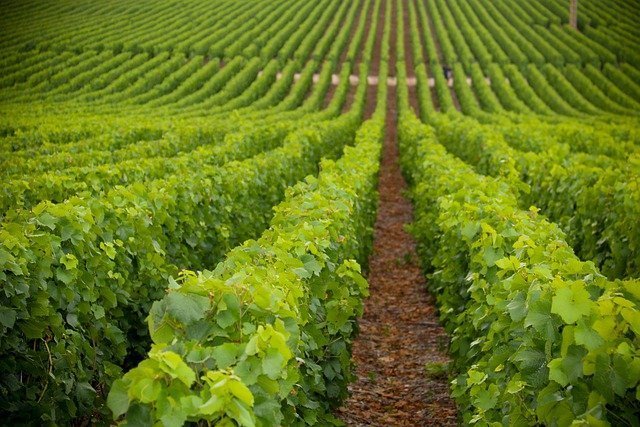
Planting Method
For plantation of grapes open trenches in North to South direction. Maintain width and depth of 75 centimetres, and length of 118 metres. Keep the trenches open for 10 to 15 days for proper sunlight exposure.
After 10 to 15 days cover trenches up to 45 centimetres with top soil. Above this layer fill with well rotten Farm Yard Manure, Neem Cake Fertilizer, and apply biofertilizers such as jeevamrut or sanjeevak.
You can also add 2.5 Kilograms of super phosphate, 500 grams of sulphate, 50 grams of ZnSO4 and FeSO4 in every 1 metre length of the trench.
If you are practicing organic farming then you can use bone-meal instead of inorganic fertilizers. While planting maintain at least 2 to 3 metres distance between rows and 1 to 2 metres between vines.
Spacing (Vigorous Variety): 6×3 or 43 metres
Spacing: (Less Vigorous Variety): 3×3 or 3×2 metres
Start plantation in pits of 60 to 90 centimetres depth at ideal distances. Growth of the grapevine will start 10 days after transplantation.
Fertilizers
Grape is a heavy feeder crop, hence it requires large amount of fertilizers to give good yield. That’s why organic grape farming is expensive. But it is worth trying because the net return is higher.
Fertilizer requirement depends on fertility of the soil and selected variety of grapes. Hence I will advice you to get your soil tested in the nearest Agriculture Centre.
However on an average it requires 700 to 900 Kilograms of Nitrogen, 400 to 600 Kilograms of Phosphorus and 700 to 1000 Kilograms of Potassium per hectare every year. It also requires other nutrients such as Calcium, Sulphur, Sodium, Aluminium, and Iron for better crop growth.
Apply half doze of fertilizers during pruning which is carried out during near end of dormant season i.e. late winters. You can apply rest doze of fertilizers in split dozes as foliar spray.
If you are practicing organic grape farming then apply 60 to 80 tonnes of Organic Manure per hectare. Along with this also add neem cake fertilizer @ 1.50 tonnes per hectare. Moreover adding Trichoderma, PSB, and Azatobacter @ 25 grams per plant is beneficial.
During active growing stage you can keep spraying jeevamrut biofertilizer at an interval of 10 to 15 days to improve crop health and fruiting.
Irrigation
Consistent soggy or wet soil can damage the crop. Therefore well drained soil is necessary. Irrigation in grapevine farm mainly depends on rainfall pattern, variety, growth stages, time of pruning, water holding capacity of soil, spacing, and training system.
Construct a small circular basin of 50 centimetres around newly planted grapevines. Irrigate once after every 3 days during initial days after plantation. Increase the size of basin up to 2 metres with increase in growth of vines.
However the most effective irrigation method in grapevine is through drip irrigation system with only one emitter. Later on you can increase number of emitters to two to four depending on spacing. Keep then 20 to 40 centimetres away from the stem.
Irrigate heavily soon after pruning of vines to initiate healthy root growth in the soil. During winters you can irrigate at an interval of 10 to 12 days. And during summers irrigate at an interval of every 5 to 7 days.
However during rainy season irrigate according to the condition of the soil. Excess irrigation and waterlogged soil can cause fungal infections in the standing crop.
Training & Pruning
Training and pruning of vines are essential steps in grape farming to get higher yields and reduce pests and diseases. You can try head, bower, Kniffin, or arbour training system in your farm.
However, the most popular training system is bower system. If you have selected vigorous variety with high apical dominance the you should definitely follow bower training system.
For medium vigorous variety you can try Kniffin or telephone training system. Although it is less expensive than bower system but it has few drawbacks. Yield gets reduced due to reduce in number of canes per unit area and chance of sunburn increases.
For less vigorous varieties you can adopt head training system. It is least expensive system and chances of diseases is much less in this system.
Practice single or double pruning within a year. You can practice first pruning during April and second pruning during October. Leave 0 – 2 buds on arm during first pruning. It helps in vegetative growth of the branches.
During second pruning of grapevines, leave 5 – 10 buds on fruiting cane. Irrigate heavily after pruning for better growth and development.
Harvesting
Vines will start producing fruits two years after plantation. Depending on variety and plantation time you can start harvesting fruit from February to June or even July. Although one day before harvesting remove all the dead and diseased grape berries from the farm.
Prefer harvesting during early mornings when temperature remains below 20 degrees Celsius.
FAQ On Grape Farming
Grape cultivation is the specialty of which region?
Grape cultivation is a specialty of the Mediterranean region. In this region, other crops olive, quinoa, cucumber, lupine, etc. also grows very well.
Author’s Note
I guess you can now start grape farming easily after reading this article. If you have any doubts, queries or suggestions then comment below. You can also connect with Agriculture Review on Facebook, Instagram, and Koo.

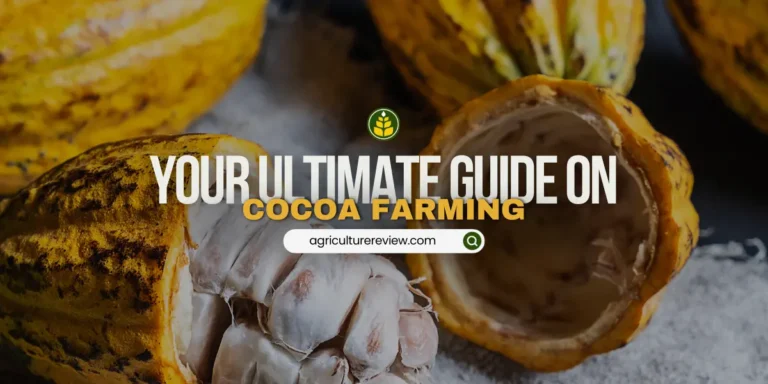
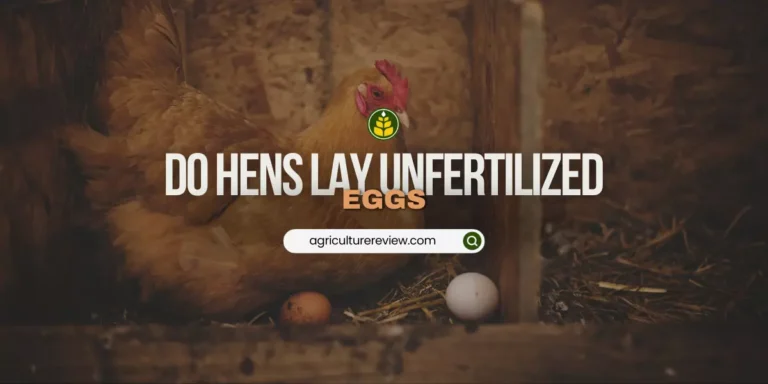


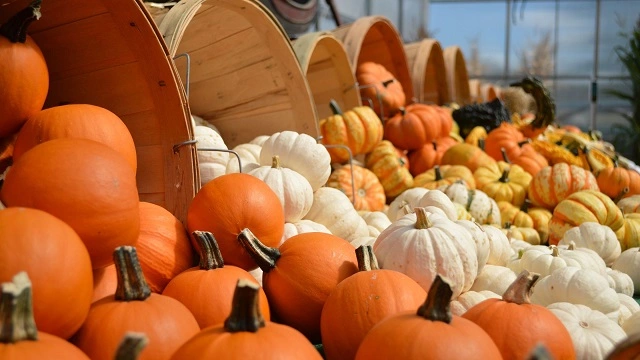
Thank You So much For this great information about Grapes farming!
Welcome!